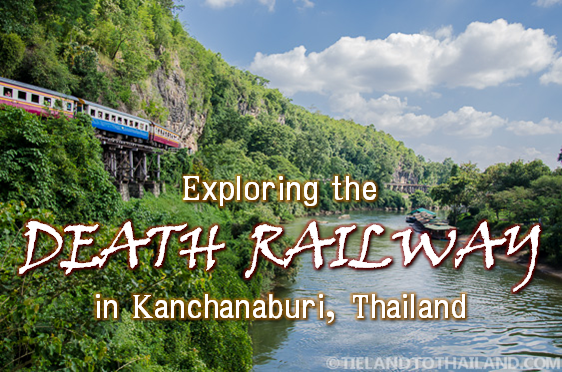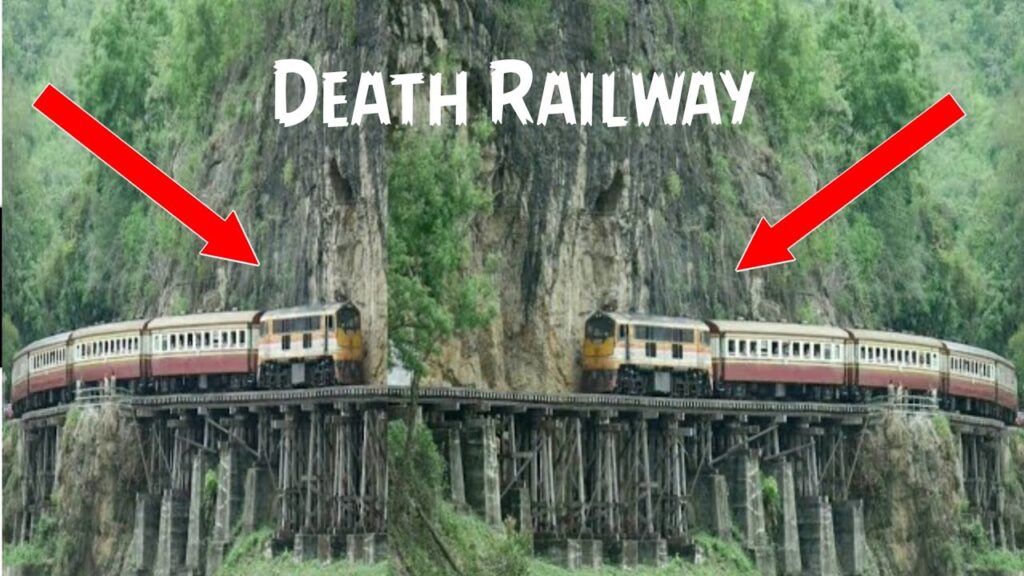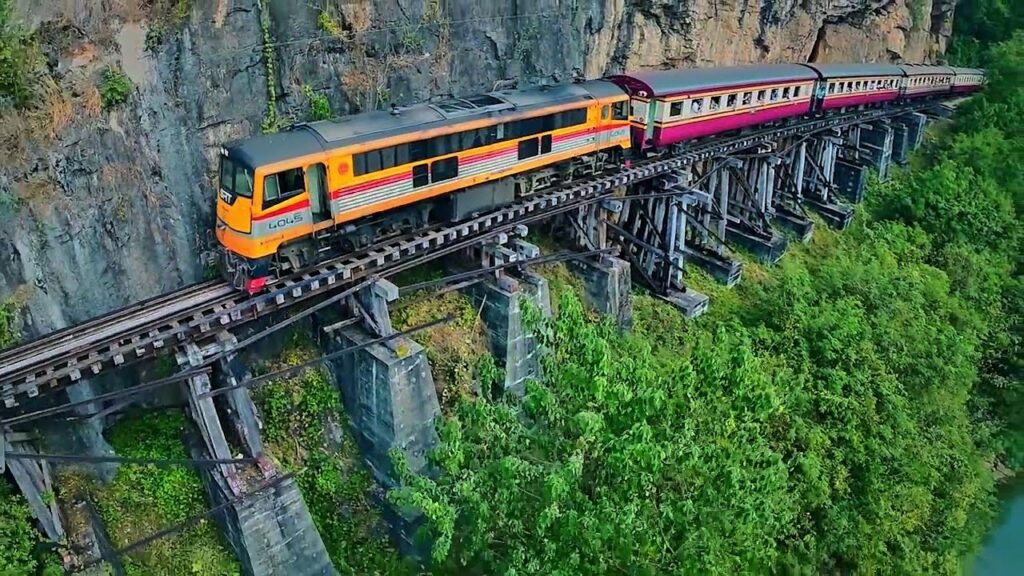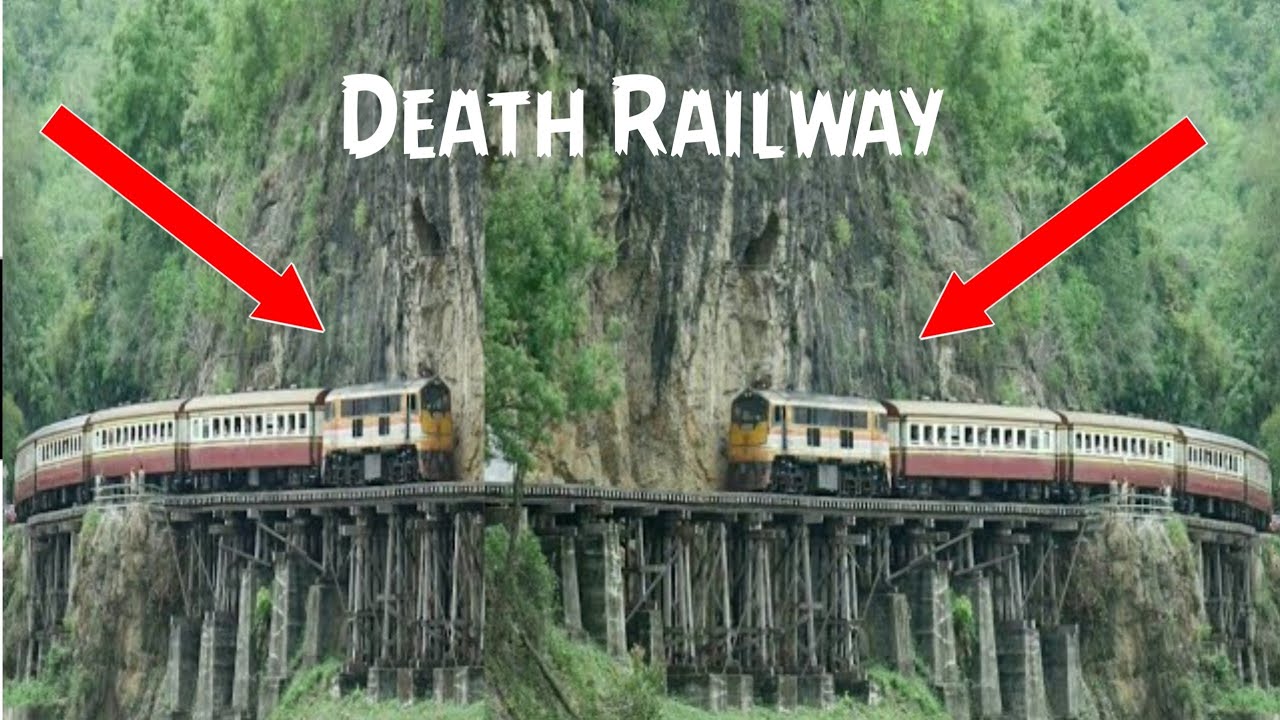Imagine taking a journey through the depths of history, uncovering the secrets of an enigmatic railway that has captivated hearts for decades. Welcome to the Death Railway of Thailand, an extraordinary piece of engineering that tells the haunting tales of sacrifice and hardship. As you traverse the stunning landscapes of this country, you will immerse yourself in the rich tapestry of Thai culture, savouring the delectable cuisine, basking in the sun-kissed beaches, and exploring the vibrant cities. However, it is the discovery of this mysterious railway that will truly leave an indelible mark on your soul, forever entwining you with its haunting past.

Historical Background
Construction of the Death Railway
The Death Railway, also known as the Burma-Siam Railway, was constructed during World War II by prisoners of war and forced laborers under the Japanese occupation of Southeast Asia. The construction began in 1942 with the goal of connecting Bangkok, Thailand, to Rangoon, Burma (now Myanmar). The route was intended to provide the Japanese forces with a more direct and efficient supply line for their military operations in Burma.
Purpose of the Death Railway
The construction of the Death Railway was driven by the Japanese military’s need for a reliable transportation route to support their strategic objectives in Southeast Asia. The existing sea route was vulnerable to Allied attacks, and the Japanese sought to create a land-based alternative that would allow them to transport troops, equipment, and supplies. The railway was seen as a key component in securing Japanese control over the region and advancing their imperial ambitions.
Conditions for the Workers
The conditions under which the railway was built were appalling. Prisoners of war from countries like Britain, Australia, the United States, and the Netherlands, as well as forced laborers from Southeast Asian countries such as Thailand and Burma, were subjected to extreme physical and mental abuse. They endured long work hours, malnutrition, disease, and brutal treatment by their Japanese captors. The harsh terrain, with its dense jungles and rocky hills, added to the difficulties faced by the workers. It is estimated that over 100,000 people lost their lives during the construction of the Death Railway.
Route and Landscape
Geographical Overview
The Death Railway stretched for approximately 415 kilometers (258 miles) between Nong Pladuk in Thailand and Thanbyuzayat in Burma. The route traversed diverse terrains, including dense jungles, steep cliffs, and deep valleys. The railway cut through the rugged and challenging landscape, crossing over rivers and carving its way through mountains. The construction of the railway required the building of numerous bridges, viaducts, and tunnels, making it a remarkable engineering feat given the limited resources and time available.
Stations along the Railway
There were several significant stations along the Death Railway, each with its own historical and cultural importance. The major stations included Kanchanaburi, which served as the western terminus of the railway; Chungkai, where the notorious Chungkai War Cemetery is located; and thanbyuzayat, the eastern terminus in Burma. These stations acted as vital hubs for the transportation of troops, equipment, and supplies during the war. Today, these stations serve as reminders of the past and attract tourists interested in exploring the history of the Death Railway.
Infamous Bridge over the River Kwai
History and Significance
One of the most iconic symbols of the Death Railway is the Bridge over the River Kwai. Constructed by Allied prisoners of war, the bridge gained worldwide recognition through the novel and subsequent film of the same name. The steel bridge, built over the Mae Klong River (a.k.a. Kwai Yai River), was a critical part of the railway, connecting the sections between Kanchanaburi and Nam Tok. The bridge’s historical significance lies not only in its role during World War II but also in the cultural and literary impact it has had over the years.
Tourist Attractions at the Bridge
Today, the Bridge over the River Kwai is a major tourist attraction, drawing visitors from around the world. Tourists can walk over the elegant steel structure, taking in the panoramic views of the river and surrounding landscapes. Several museums and exhibitions nearby provide insights into the history of the Death Railway and the experiences of the prisoners during its construction. The annual River Kwai Bridge Week, held in November, features various cultural performances, light shows, and historical reenactments, adding to the appeal of the site as a tourist destination.
Local Communities and Memorials
Living with the Legacy
The local communities living along the Death Railway have been deeply affected by its historical legacy. Many families can trace their roots back to the time of the railway’s construction, with ancestors who either worked on its construction or were prisoners of war. While the memories of the atrocities committed during that period still linger, the local communities have sought to honor the victims and preserve the historical significance of the railway. The people have embraced the influx of tourists as an opportunity to raise awareness, educate visitors, and commemorate the sacrifices made by those who perished during the construction.
War Cemeteries and Memorials
War cemeteries and memorials serve as poignant reminders of the human cost of the Death Railway. The Chungkai War Cemetery, located near the Chungkai Station, is the final resting place for over 1,740 Allied prisoners of war who lost their lives during the construction. The meticulously maintained cemetery stands as a solemn tribute to those who made the ultimate sacrifice. Similarly, the Thanbyuzayat War Cemetery in Burma is another significant memorial site, honoring those who perished on the eastern stretch of the railway. These cemeteries remind visitors of the profound impact that the Death Railway had on countless lives.

Exploring the Hellfire Pass
Significance of Hellfire Pass
Hellfire Pass is a section of the Death Railway that holds particular historical significance. The name refers to a particularly grueling cutting in the mountains where prisoners of war and laborers were forced to carve through solid rock. The conditions were excruciating, with work carried out during the night under the glare of torchlight, giving the pass its ominous name. Today, Hellfire Pass stands as a symbol of the hardships endured by those involved in the construction of the railway.
Visiting Hellfire Pass Museum
The Hellfire Pass Museum offers visitors a meaningful and educational experience. The museum features exhibitions that provide insights into the construction of the railway, the experiences of the workers, and the historic context of World War II in Southeast Asia. Visitors can explore the preserved section of the railway and walk the trails that follow the original route. It is a somber and thought-provoking experience, allowing visitors to reflect on the immense human suffering and sacrifices associated with the Death Railway.
Historical Significance and Impact
Impact on Thailand
The construction of the Death Railway had a profound impact on Thailand. The building of the railway required the cooperation of the Thai government, with thousands of Thai laborers working alongside the prisoners of war. The railway project left a lasting legacy on the country’s infrastructure and development. It brought about advancements in engineering and transportation that continued to benefit Thailand long after the war ended. The history and remembrance of the Death Railway also played a role in shaping Thai society, with efforts made to honor the victims and educate future generations about the war’s atrocities.
Impact on World War II
The Death Railway holds significant historical importance in the context of World War II. The construction of the railway played a crucial role in the Japanese war effort, allowing them to efficiently transport troops and supplies. However, the hardship and brutality endured by the workers marked a dark chapter in human history. The legacy of the Death Railway serves as a reminder of the atrocities committed during the war, and the remembrance of its victims contributes to the broader understanding of the impact of World War II on the global stage.

